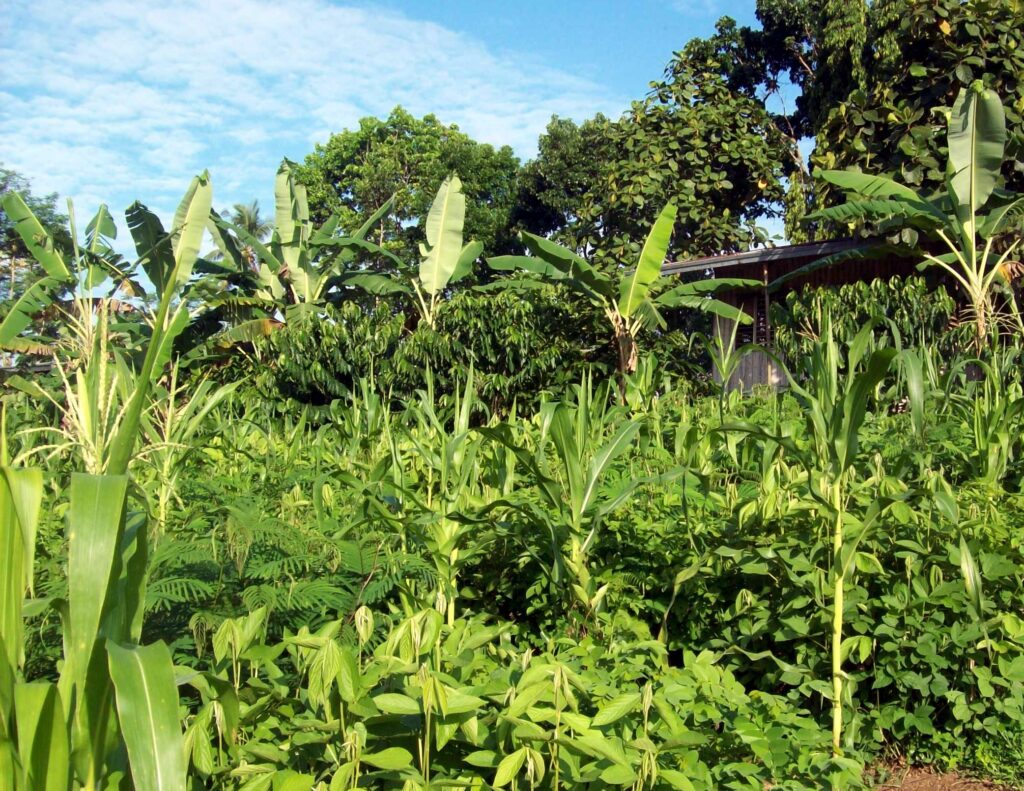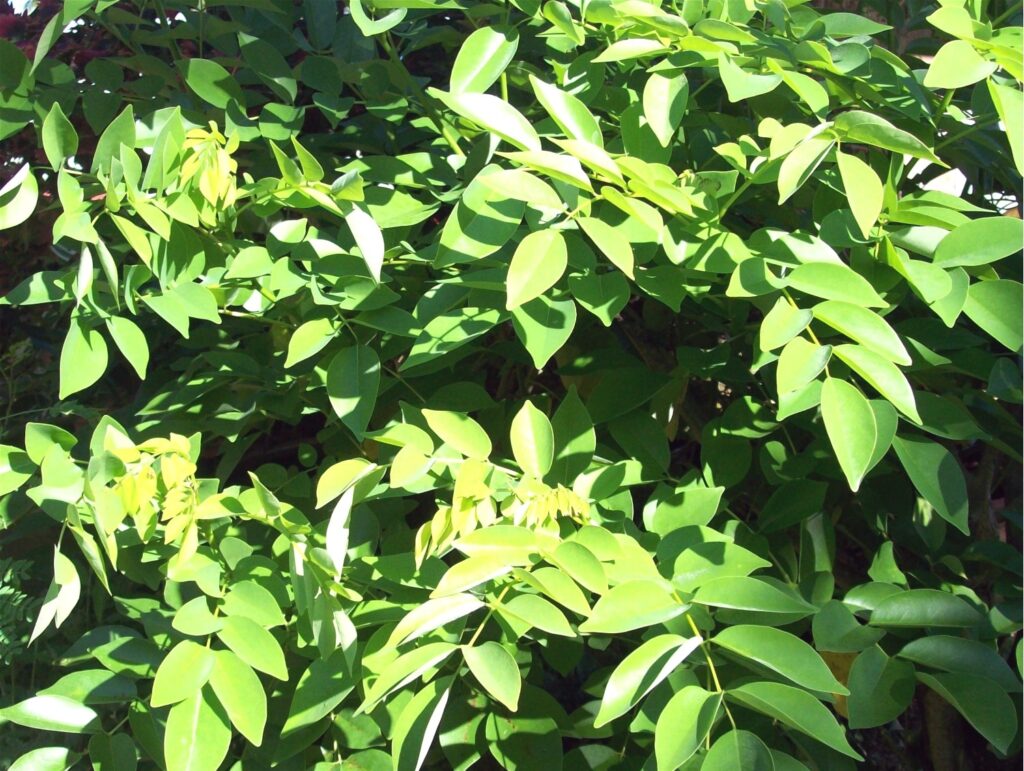Text and Photos by Henrylito D. Tacio
The increasing demand for goat meat is a boon to farmers engaged in goat raising, making backyard and commercial projects a promising investment field.
As in any other industry, a decisive factor in the development of a commercially viable goat raising industry is the product. As everybody in livestock raising knows, the right choice of feeds has a direct bearing on the meat’s quality.
“Goats should be fed nutritious feeds on a year round basis,” says Jethro P. Adang, the director of the Mindanao Baptist Rural Life Center (MBRLC) Foundation, Inc. in Kinuskusan, Bansalan, Davao del Sur.
The question is, how? “Native grasses decline fast, have low volume per hectare, are inadequate for high stocking rates, and do not respond well to fertilization,” Adangexplains.
Obviously, the solution is to plant new, improved, and more efficient grass and legume species, which are palatable to goats. A 50-50 combination of both provides three advantages: 1) it improves milk production and chevon quality, 2) fertilizes the soil, and 3) helps prevent soil erosion.
Every pasture land is unique. The variables are soil, elevation, climate, and location. Certain types of grasses and legumes will grow well in one area, poorly in another. Goat raisers should put up test plots and secure technical advice and, depending on the performance of different species, gradually expand.
Some of the promising pasture and forage crops for goats are star grass, Napier grass, guinea grass and para grass for grasses and ipil-ipil, centrosema, stylo, siratro, kakawate, kadios, flemingia, and rensonii for legumes:

Star grass (Cynodon plestostachyus). A very aggressive, creeping perennial, this East African native grass can easily crowd pasture grasses and legumes. It is very resistant to trampling and drought but tends to become very stemmy when mature. Above average in crude protein, young stands are relished by goats. It responds well to fertilization and, with cuttings, is easily established.
Spreading quickly, star grass effectively holds sandy soils along waterways and embankments. It’s very tolerant of grazing and trampling and is particularly useful in alleys and paddocks near the corral, which are frequently overstock.
Star grass grows well in the Cagayan Valley, Negros Occidental, North and South Cotabato, and Davao provinces. It blends well with centrosema.
Napier grass (Pennisetum purpureum), Also known as elephant grass, is the most popular improved pasture species in the country because of its vigor, productivity, drought tolerance, and relative ease in establishing it. Like the star grass, it responds well to fertilization.
While unable to tolerate waterlogging, this species grows under many soil conditions. Although commonly used for soilage and silage, it may be grazed. It also makes excellent stands with legumes like centrosema and siratro.
Napier grass, which is similar to sugarcane in appearance, can be propagated commercially utilizing stem cuttings. If it is not grazed and allowed to become overgrown, napier grass becomes tall and stemmy. It is an excellent species for zero-grazing in goat raising. Napier grass is low in crude protein.
Guinea grass (Panicum maximum); This African native grows on a wide range of soil but is better suited to medium to the highly fertile soil. It responds well to high levels of nitrogen fertilization.
Like the napier grass, it cannot tolerate waterlogging. Guinea grass can be established commercially using rootstocks and seeds. It grows well with legumes, like centrosema and stylo, and under trees of semi-cleared conditions. Guinea grass is only average in crude protein.
Para grass (Brachiaria mutica); This species has become popular due to its ability to grow well under waterlogged conditions. A trailing grass that roots freely at the nodes, it responds well to nitrogen fertilizer. It is best suited for low flat lands and where poor drainage is a problem.
Para grass is a common weed in irrigation channels and drainage ditches. It is extensively used in Davao’s low coastal goat and coconut farms as well as in the Bukidnon’s highlands (up to 760 meters above sea level).
Like napier grass, it’s very easy to establish from stem cuttings. It is not as resistant to grazing as guinea grass, but para grass seems to be the goats’ favorite grass. It is average in crude protein.
Ipil-ipil (Leucaena leucocephala). This is a perennial shrub or tree. Ipil-ipil leaves are bipinnate with white head inflorescence. It is recommended as a folder crop for backyard goat raising. The young stem and leaves can be dried and pulverized into leaf and stem meal, or it may be fed as fresh-cut forage.
Although ipil-ipil contains an undesirable alkaloid called mimosine, which causes feather loss in poultry and hair loss in horses and pigs, goats can be fed high levels of ipil-ipil without any adverse effects. Ipil-ipil is very high crude in protein.
Centrosema (Centrosema pubsecens). This is a trailing and climbing perennial with bright purple flowers weakly rooting at the nodes. Centrosema grows well even on acidic soil and is adaptable to the high rainfall areas in the eastern part of the Philippines.
Like other species, it combines well with many kinds of grass. Moderately tolerant of waterlogged conditions, it is recommended for grazing under coconut trees. In feed value, it is high in crude protein, and goats find it very palatable.
Siratro (Phoseolus atropurpureus). A twining perennial with many-branched hairy stems and trifoliate leaves with distinctive indentations on the margins; it grows on a wide variety of soils, is drought-resistant, mixes with grasses and seeds profusely.
Although siratro is susceptible to Rhixonctonia during the rainy season, it recovers quickly in summer. This species is not widespread, and seeds are very hard to obtain. Siratro is high in crude protein.
Calliandra (Calliandra calothyrsus). A shrub that rarely reaches more than ten meters tall, calliandra with its red flowers is usually grown as an ornamental. While it does not produce seeds readily, it grows very well in Mindanao.
Calliandra grows on many different soils, including infertile ones; it even grows in heavily compacted clay-type soils with poor aeration. Per a fresh and dry weight basis, it has a crude protein content of 9.42 percent and 28.26 percent, respectively. But the leaves are high in tannins, which may restrict the absorption of the protein. As such, it should be fed with other legumes and grasses.
Kakawate (Gliricidia sepium). This is a small tree that grows up to ten meters high. It has an open crown and often contorted trunk that is 30 centimeter or less in diameter. It does well in moist and dry soil, even with a heavy concentration of limestone. In addition, it can tolerate acidic soil.

The leaves contain over 20 percent crude protein and are nutritious for livestock. When given to goats, it should be mixed with other legumes and grasses.
Kadios (Cajanus cajan). A woody shrub that can grow as tall as3.6 meter, it can be grown in a wide range of soils but cannot withstand water-logging. It thrives in light sandy soils but grows best in neutral deep loam soil. The pods, husks, and foliage can be used for feeding goats. The dry seeds contain about 22 percent protein.
Flemingia (Flemengia macrophylla). This is a shrub attaining 2-3 meters in height. It has a deep root system and produces dense foliage. It looks somewhat similar to kadios but does not produce edible beans. It is somewhat shade and fire-resistant. Per a fresh and dry weight basis, it has 6 percent and 18 percent crude protein, respectively.
Rensonii (Desmodium rensonii). This is an erect shrub that grows well in moist areas with even rainfall distribution. It can be planted by seeds or by cuttings. It is very fast-growing with good foliage production, yielding 1.9 kilograms per linear meter of a hedgerow. Its coppicing ability is excellent.
With a crude protein content (23%) rivaling alfalfa in the temperate climates, rensonii has been successfully tested at the MBRLC as an animal feed not only for goats but also for sheep and cattle rabbits, and swine as well.

